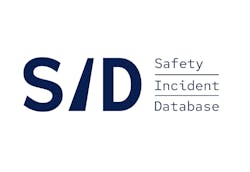Ground Handlers' Data-Driven Mission

SID, which stands for Safety Incident Database, is an acronym that the Airport Services Association (ASA) coined in 2020.
According to ASA director general Fabio Gamba, with this acronym, the association’s aim is to inaugurate its both novel and traditional concept of allowing its participants, the ground handling service providers (GHSPs), to do two main things.
“One is to create a repository of ground incident, near-miss and hazard database following an agreed upon taxonomy, and the other is to allow the participants to benchmark their own data against the rest of the industry – the rest being obviously only available in aggregated and de-identified form,” he says.
Data-Driven Tool
Simply put, SID is a unique tool using data-driven information to support GHSPs’ continuous improvement in safety. It aims to help them reduce aircraft ground damage and delays, according to Gamba.
“The definition phase took the association and members around a year or so, and we are now putting the finishing touches to the development phase, having started collecting the data of seven pioneering companies covering around two years of operations,” he says.
Being at the end of this pilot phase, ASA is now ready to launch the deployment phase as of the second part of 2023. ASA started working on the concept at a time when the whole world was at a standstill due to COVID, and this has allowed officials to go through all the stages of the definition phase in depth, observes Gamba.
“We feel our feet are on solid ground. We are to announce a turnkey platform that any GHSP, irrespective of the size or geographical location, will feel comfortable with and be able to apply without unnecessary effort,” he says. “In order to make sure we are not measuring pears and apples, even the most basic fields must be defined in such a way that they mean the same everywhere and all the time and that there is no space for interpretation.”
SID Participation
ASA’s mantra is that SID was done "by GHSPs for GHSPs." As this phrase implies and Gamba points out, the taxonomy has been developed exclusively for the operational reality of GHSPs.
“This is important as there are other repositories in place today that are offered to the sector with the same declared purpose, but whose objectives, and hence relative taxonomy, significantly differ,” he affirms. “There are not, currently, bespoke solutions to the intrinsic specificities of the sector and this may affect the possibility for the sector to benchmark, a feature that is at the heart of the SID concept.”
Indeed, SID is GHSP-specific, although the possibility to include in the future other elements of the aviation service provision industry such as, for instance, onboard catering or fueling companies has not been ruled out, observes Gamba.
“There are currently seven ground handling companies (in alphabetical order: Acciona, Airport Terminal Services, Çelebi, dnata, Menzies Aviation, Swissport and WFS) that have volunteered to test the concept by submitting their data so far,” he says. “We are discussing with a couple of additional companies which showed a strong interest in the concept and in helping the association constantly improve the model. Once we hit the deployment phase later this year, we do not intend to impose any participation limit. On the contrary, the more the merrier as, from a pure benchmarking perspective, the interest of pitting oneself against other GHSPs is commensurate to the number of participants.”
There are a number of conditions for future participants to consider and the first is to be an ASA member, Gamba highlights.
“Participation of the members is free but the complex software running SID, the attribution of a personalized dashboard and all the work behind the scenes to oil the machinery imply recurrent costs that we thought could only be partially covered through membership fees,” he says.
In addition, only members having signed a non-disclosure agreement (NDA) are allowed to join, points out Gamba.
“We know and understand how sensitive many of the topics collected via SID may be, and we want to make sure the participants can submit their data in full trust and with the confidence that their data will not, at any point or under any circumstance, be seen and/or identified other than in aggregated form,” he affirms.
“Finally, whilst SID has a universal vocation, we only want to onboard companies, which take safety and the constant thrive to improve their operations seriously,” Gamba continues. “There can be no free lunch, and companies interested only in accessing the data without submitting their own in an exhaustive and accurate way are quickly spotted and reminded to contribute. This can only work if it is a two-way process.”
Reporting Taxonomy
As to the taxonomy adopted in the development of SID, Gamba affirms that it was the result of days and weeks of passionate and sometime quite intense discussions among industry experts, but it is predicated on a number of guidelines that they sensed should underlie SID.
“To begin with, we thought it wise to build a platform that may be easily expanded over time and as per requirement, and hence it needed to be adaptable, robust and easily allow later plug-ins,” he says. “We have deliberately chosen to measure and compile data on a restricted number of fields that we knew GHSPs could easily dig out from their system. We felt this was actually key as we want to appeal to a majority of them by proposing a taxonomy that every GHSP can quickly adapt and relate to, not discourage them with an over complex set of fields requiring heavy man-hours in data collection.”
In addition, the taxonomy needed to be “technology-agnostic,” meaning that anyone, any company irrespective of the corporate methods used to compile their data internally, should be able to extract the figures requested and submit them as easily as possible, points out Gamba.
“The submission is made via a simple Excel spreadsheet, and the data, following a number of automated steps, is then computed by an outsourced professional aggregator, EcoOnline,” he says. “EcoOnline dispatches the results (typically every quarter) in a way that the participant companies, via their individual dashboard, may organize according to their preference, but always following the same pattern: the participant may compare its own data with that of the rest of the industry, aggregated and de-identified. We also produce a quarterly general report, today for internal consumption only, but that could be disclosed publicly once the deployment phase is activated.”
What it is Revealing
It is currently premature for ASA to already disclose hard truths or even lessons learned, affirms Gamba.
“There are however a few comments worthy of interest. One of them is that this industry is submitted to intense pressures coming from mainly three different sources: the customers (airlines) obviously, but also the airports (granting of licenses) and more and more the national authorities themselves (oversight, regulations),” he says. “For too long the ground handling sector has been accused of being an unruled black box costing the industry billions of dollars every year in aircraft hits and delays, personal injuries, etc. Without denying that our industry has a direct impact on these matters, we have found all the efforts in trying to measure this impact so far to be certainly laudable, but also to fall somewhat short of their stated purpose. After all, they simply consist in measuring a symptom, without providing incentives to improve.”
According to Gamba, SID will facilitate evidence-based discussions with other industry stakeholders on policies that might affect the GHSP community and discuss solutions to drive safety improvement, to identify emerging trends and eventually to incentivize each participant to do what it takes to beat the rest of the industry, thus contributing to lifting its safety records up.
“This is the ultimate objective of SID,” he says, “and we cannot wait for the whole industry to join in.”
About the Author

Mario Pierobon
Dr. Mario Pierobon provides solutions in the areas of documentation, training and consulting to organizations operating in safety-sensitive industries. He has conducted a doctoral research project investigating aircraft ground handling safety. He may be reached at [email protected].